View member contours
You can show colored contours on members for displacements, forces, moments and stresses by clicking the  toolbar button.
toolbar button.
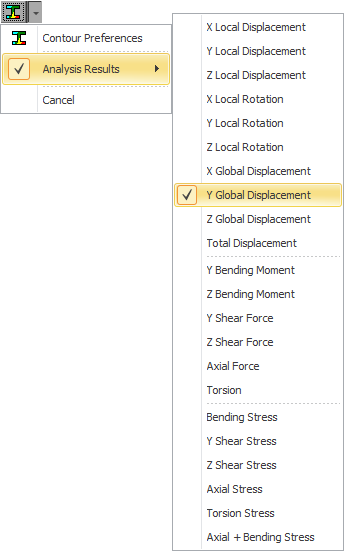
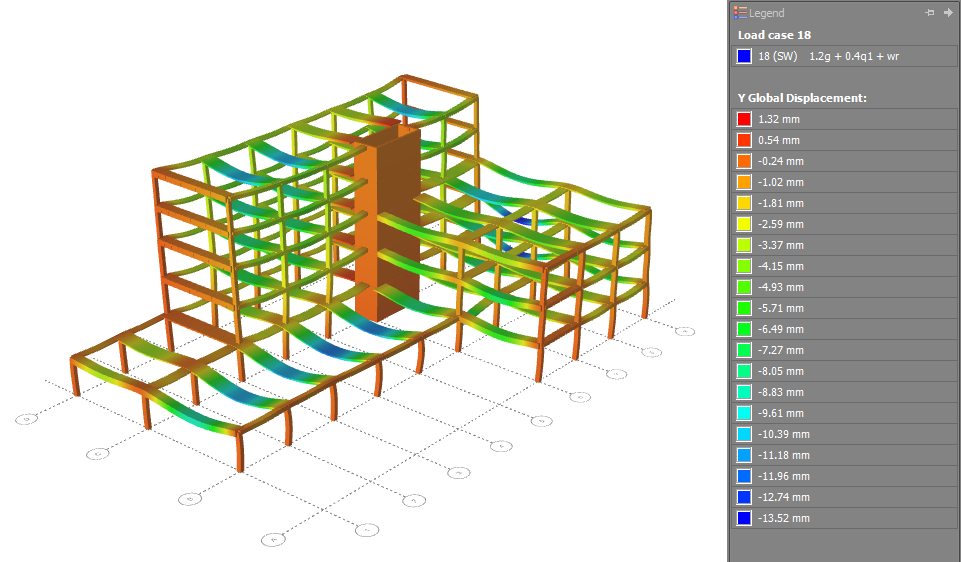
Note that if you try to show contour diagrams for multiple load cases or with enveloping turned on and set to "Both" then you will get contour diagrams drawn on top of each other with confusing colors. If you really want to show contours for multiple load cases or with enveloping set to "Both" then you should also turn on deflections via the  button and the contour diagrams will then be separated and drawn in the deflected position for each load case or min/max envelope. You can then scale the deflected contour diagrams by holding down the "D" key while rotating your mouse scroll wheel in the normal way.
button and the contour diagrams will then be separated and drawn in the deflected position for each load case or min/max envelope. You can then scale the deflected contour diagrams by holding down the "D" key while rotating your mouse scroll wheel in the normal way.
Querying contour diagrams
You can query the contour values by simply hovering your mouse over any point along a member. In the following example, the point being queried falls on member 62, and for load case 18 the deflection is -6.02mm.
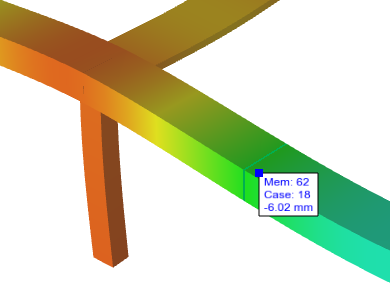
When querying stress contours, a value is given for each corner of the cross section and is shown as T-L (top-left), T-R (top-right), B-L (bottom-left) and B-R (bottom-right), where "Top" is defined as on the side of the member's positive local y-axis and "Right" is defined as on the side of the member's positive local z-axis.
If the cross section is not rectangular, the query values apply to the corners of the bounding rectangle that encloses the cross section rather than to the actual corners of the cross section. In the case of the Tee section shown below, the T-L and T-R values accurately reflect the stresses at the top corners of the flange because they coincide with the corners of the bounding rectangle, however the B-L and B-R values do not reflect the stresses at the bottom corners of the web. Note however that this restriction only affects the query values and not the colors. The contour colors accurately represent the stresses at every point in the cross section, regardless of its shape.
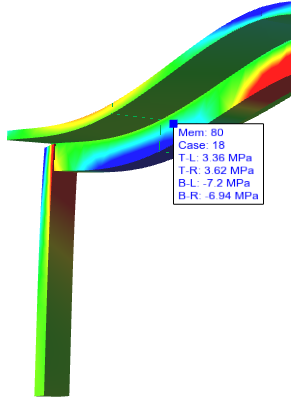
Contour preferences
Clicking "Contour Preferences" from the above menu gives you access to the contour diagram settings as follows. You can see that some of the settings apply to plate contours which you can ignore when showing member contours.
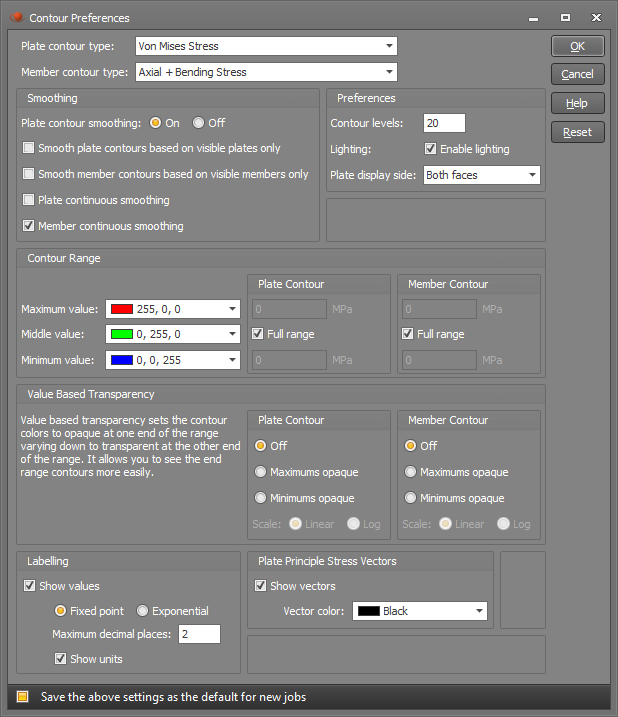
Contour smoothing
If the "Smooth member contours based on visible members only" option is ticked and a filter is active then any members filtered out will be ignored when the contour levels are calculated. Otherwise all members in the model will be used to determine the contour levels. The "Member continuous smoothing" option lets you switch from a finite number of color levels to an infinitely varying color gradient.
Contour range
If you wish to display the full range of contour values, ensure that the "Full range" option is ticked. If not, you can "zoom in" on a particular range of contour values by unticking the "Full range" option and specifying upper and lower limits. Values that fall within the upper and lower limits will be colored depending on where they fall within the specified color spectrum, and any values that fall outside the limits will be given the same color as values that fall on the upper and lower limits. If you find that the contour diagram is predominantly showing the "middle" color, you may be able to display more color detail by setting a narrower contour range.
The colors in a contour diagram can be changed by double-clicking any of the three color icons and then selecting the desired color, or by clicking the "Color Picker" button.
Contour levels
The contour levels is the number of color steps used if continuous smoothing is off. The contour levels setting also controls how many colors are shown in the contour legend, even if continuous smoothing is on.
Value based transparency
If the maximum or minimum stresses, forces or moments in a member contour are hard to see then value based transparency can help by making the colors at one end of the contour range opaque and the colors at the other end of the range transparent, with a linear or logarithmic distribution in-between. A logarithmic distribution simply makes the effect more dramatic than a linear distribution. Note that value based transparency for member contours has no effect when in wireframe rendering mode.
In the following example you can see that there are small areas of high stress shown in red, however some of them are difficult to see because they occupy a small area or are hidden behind other members.
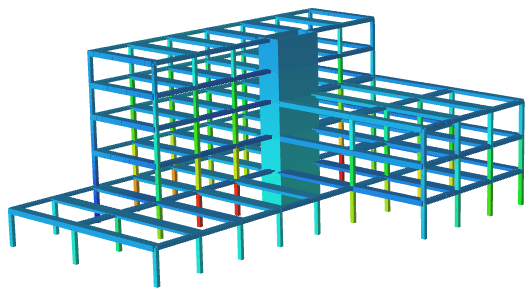
By turning on value based transparency with the maximums opaque they become much easier to see as you can see below.

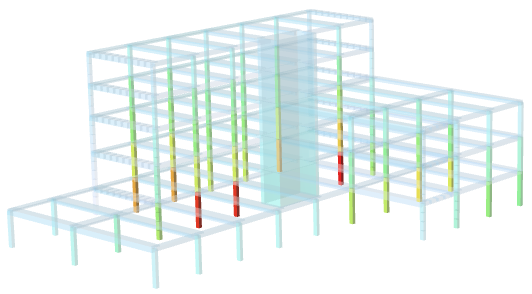
Note that if value based transparency is turned on then general contouring transparency will have no effect.